Plot summary
The sketch begins with old man preparing dinner for himself and his beloved dog, Five Bob. Dinner consumed, the man gathers a pick and shovel and travels to a "blackfellow's grave about which he was curious." He digs up the bones, places them in a bag, and starts for home. He discovers the body of a man, parched by the intense Australian sun. After close examination, the deceased man is determined to be a friend of the old man, an alcoholic named Brummy. The old man, somewhat ingeniously, devises a way of carrying Brummy back home, but he is startled by numerous large, greasy black goannas. He wonders why the peculiar lizards are so abundant today. He only discovers later, when he shoots one near the house, that they are attracted to Brummy's body. When the old man returns to his home, he decides that Brummy deserves a respectful funeral. He buries his friend, and decides that something must be said. He is unsure of Brummy's religion, or if he even has a religion at all, but the old man does his best. Presently, he rises, takes up his tools, and walks back to his hut as the sun sinks on the "grand Australian bush."
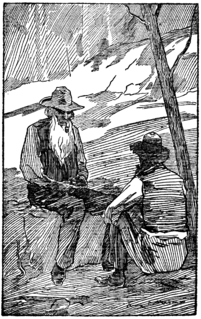
Brummy Hewson also known as Brummy Hughson or Brummy Usen is a recurring fictional character in the works of writer and bush poet, Australia's Henry Lawson.
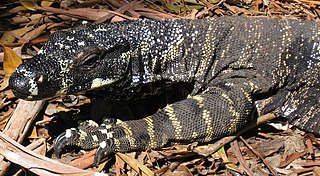
A goanna is any of several Australian monitor lizards of the genus Varanus, as well as certain species from Southeast Asia.
This page is based on this
Wikipedia article Text is available under the
CC BY-SA 4.0 license; additional terms may apply.
Images, videos and audio are available under their respective licenses.
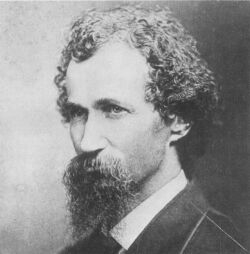
Thomas Henry Kendall publishing as Henry Kendall, was an Australian author and bush poet, who was particularly known for his poems and tales set in a natural environment setting.

"Man's best friend" is a common phrase about domestic dogs, referring to their millennia-long history of close relations, loyalty, and companionship with humans. The first recorded use of a related phrase is by Frederick the Great of Prussia. It was likely popularized by its use in a poem by Ogden Nash and has since become a common colloquialism.
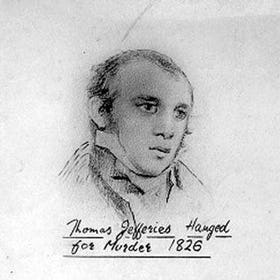
Thomas Jeffries (Jefferies), also known as Mark Jeffries, was an English bushranger, serial killer and cannibal in the early 19th century in Van Diemen's Land. Jeffries was transported for seven years from Dorset on the Albion, arriving in Van Diemen's Land on 21 October 1823. He was sentenced to 12 months in Macquarie Harbour, the penal settlement on the colony's west coast in June 1824 for threatening to stab Constable Lawson. By August 1825 he had been appointed a watch house keeper and flagellator (flogger) at Launceston Gaol.

A Christmas Carol is a 1999 British-American made-for-television film adaptation of Charles Dickens' famous novel A Christmas Carol that was first televised December 5, 1999 on TNT. It was directed by David Jones and stars Patrick Stewart as Ebenezer Scrooge and Richard E. Grant as Bob Cratchit. The film was produced after Patrick Stewart performed a series of successful theatrical readings of A Christmas Carol on Broadway and in London.
Human-baiting is a blood sport involving the baiting of humans. There are at least three known documented cases of human-baiting, all of which occurred in England in the 19th century.

John Dunn was an Australian bushranger. He was born at Murrumburrah near Yass in New South Wales. He was 19 years old when he was hanged in Darlinghurst Gaol. He was buried in the former Devonshire Street Cemetery in Sydney.
"A Child in the Dark, and a Foreign Father" is a short story by Australian writer and poet, Henry Lawson. The story, often considered to be partially autobiographical, considers the rather bleak relationship between a man and his family.
"The Union Buries Its Dead" is a well-known sketch story by iconic Australian writer and poet Henry Lawson.
The story takes place in Bourke, and concerns the burial of an anonymous union labourer, who had drowned the previous day "while trying to swim some horses across a billabong of the Darling." The narrator, possibly Lawson himself, examines the level of respect the Bushfolk have for the dead, supplementing the story with his trademark dry, sardonic humour.

The "Bulletin Debate" was a famous dispute in The Bulletin magazine from 1892–93 between two of Australia's most iconic writers and poets: Henry Lawson and Andrew Barton "Banjo" Paterson.
A soakage, or soak, is a source of water in Australian deserts.
Barney in Outer Space is a Barney & Friends home video. It features an array of traditional children's songs and school songs.
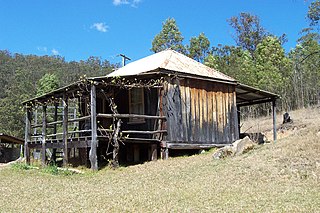
A slab hut is a kind of dwelling or shed made from slabs of split or sawn timber. It was a common form of construction used by settlers in Australia and New Zealand during their nations' Colonial periods.
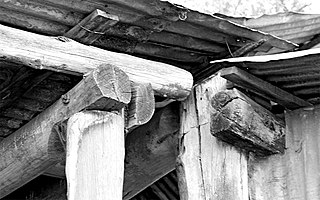
Bush carpentry is an expression used in Australia and New Zealand that refers to improvised methods of building or repair, using available materials and an ad hoc design, usually in a pioneering or rural context.
Stella was a British comedy-drama which aired on Sky 1 and was created and written by David Peet and Ruth Jones, who played the lead role of Stella. The series was largely filmed in Ferndale in the Rhondda Valley in Wales. Various celebrities made guest appearances as themselves in some episodes. A Christmas special aired on 23 December 2016.
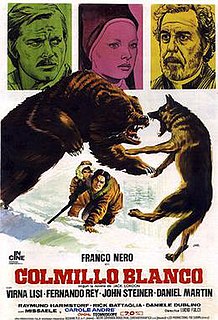
White Fang is a 1973 Italian adventure film directed by Lucio Fulci. It was produced by Harry Alan Towers and co-written by Roberto Gianviti, based on the famous novel by Jack London. It starred Franco Nero, Fernando Rey and Virna Lisi. The film gained a great commercial success and generated an official and several non-official sequels.
This article presents a list of the historical events and publications of Australian literature during 1892.
"The Drover's Wife" is a dramatic short story by the Australian writer Henry Lawson. It recounts the story of an outback woman left alone with her four children in an isolated hut.

While the Billy Boils is a collection of short stories by the Australian writer Henry Lawson, published by Angus and Robertson in 1896. It includes "The Drover's Wife", "On the Edge of a Plain", and "The Union Buries Its Dead".













